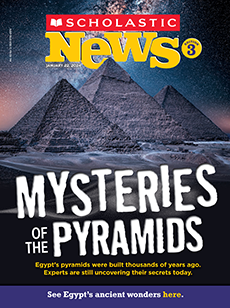1. Based on the article, what happens at a powwow?
At a powwow, Native American peoples play drums, dance, sing, eat, and tell stories with family and friends.
(RI.3.4 Determine Meaning)
2. Summarize the main idea and most important details of the section “Stolen Land.”
The section “Stolen Land” is about how the Nansemond people lived for thousands of years in the area that is now Virginia and formed a close connection with the land. In the 1600s, English settlers took control of the land and forced the Nansemond to move away.
(RI.3.2 Main Idea and Key Details)
3. Share three facts you can learn from the sidebar “All About Native Americans.”
Sample response: Three facts you can learn from the sidebar are that there are 574 Native nations in the U.S., that many Native Americans were forced to live on reservations after European settlers took over their lands, and that about 170 Native languages are currently spoken in the U.S.
(RI.3.7 Text Features)
